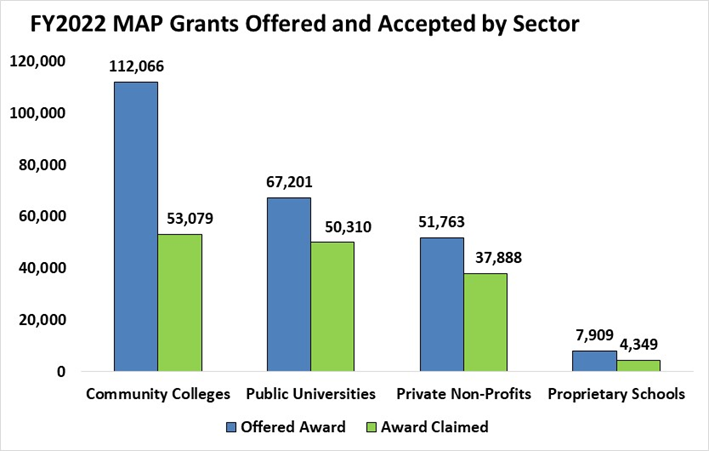- MAP Matters

- About MAP

- MAP Facts
MAP Facts
How MAP works
- A student’s eligibility for MAP is determined using information provided on the Free Application for Federal Student Aid (FAFSA®) or the Alternative Application for Illinois Financial Aid.
- Financial need is determined by subtracting a student’s family resources from the chosen college’s total cost of attendance.
- The award amount is based on the number of credit hours for which the student is enrolled. For the purposes of awarding MAP, a student is considered full time if they are enrolled for 15 hours or more per semester.
About MAP recipients
- Despite facing significant financial challenges and often being the first in their family to complete college, a majority of MAP recipients graduate at rates similar to all students within their respective institutions.
- MAP can make the difference in whether a person can attend college. It’s particularly critical in addressing the attainment gap for low income, first generation students and for students of color:
- More than half (55%) of MAP-eligible students are so low income that the federal government doesn’t consider them able to contribute any resources to pay for college. In FY 22, the average family income of a dependent (“traditional”) MAP-eligible student was $34,672/year, and the average income of an independent (“non-traditional”) MAP-eligible student was $19,309/year.
- Of the undergraduates at Illinois public universities who identify themselves as Black or Hispanic, 60% or more receive a MAP grant.
- Approximately 57% of MAP recipients are first generation—meaning those who do not have at least one parent who completed college.
- MAP recipients are enrolled in all sectors of higher education. Community college students were offered and accepted the most grants, but the percentage of students who were offered and accepted grants is much higher at public universities and private non-profit schools.


Dollar amount of award is based on student’s estimated financial need, hours enrolled, and cost of attendance at student’s selected MAP-eligible school.

 College Illinois!®
College Illinois!®


